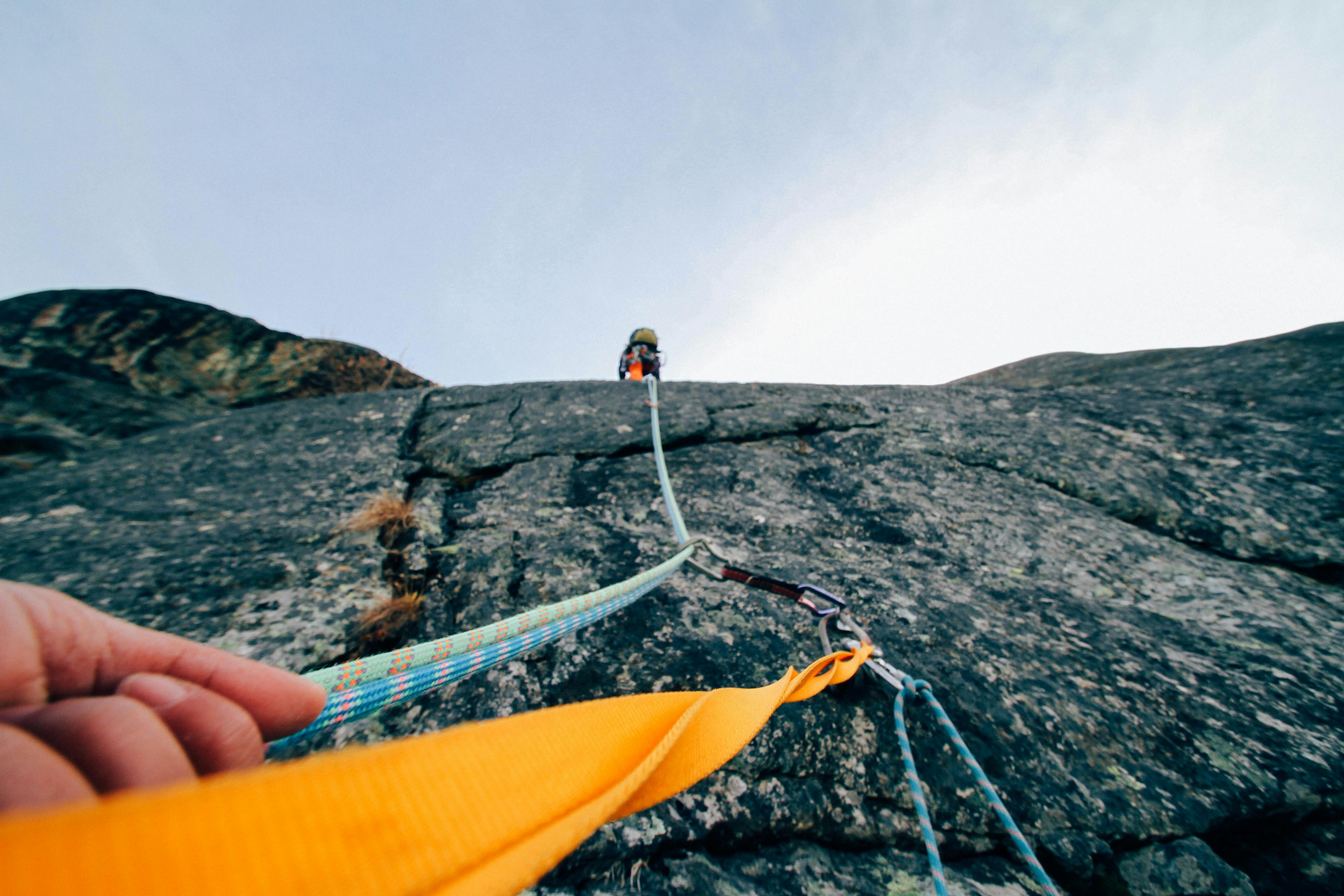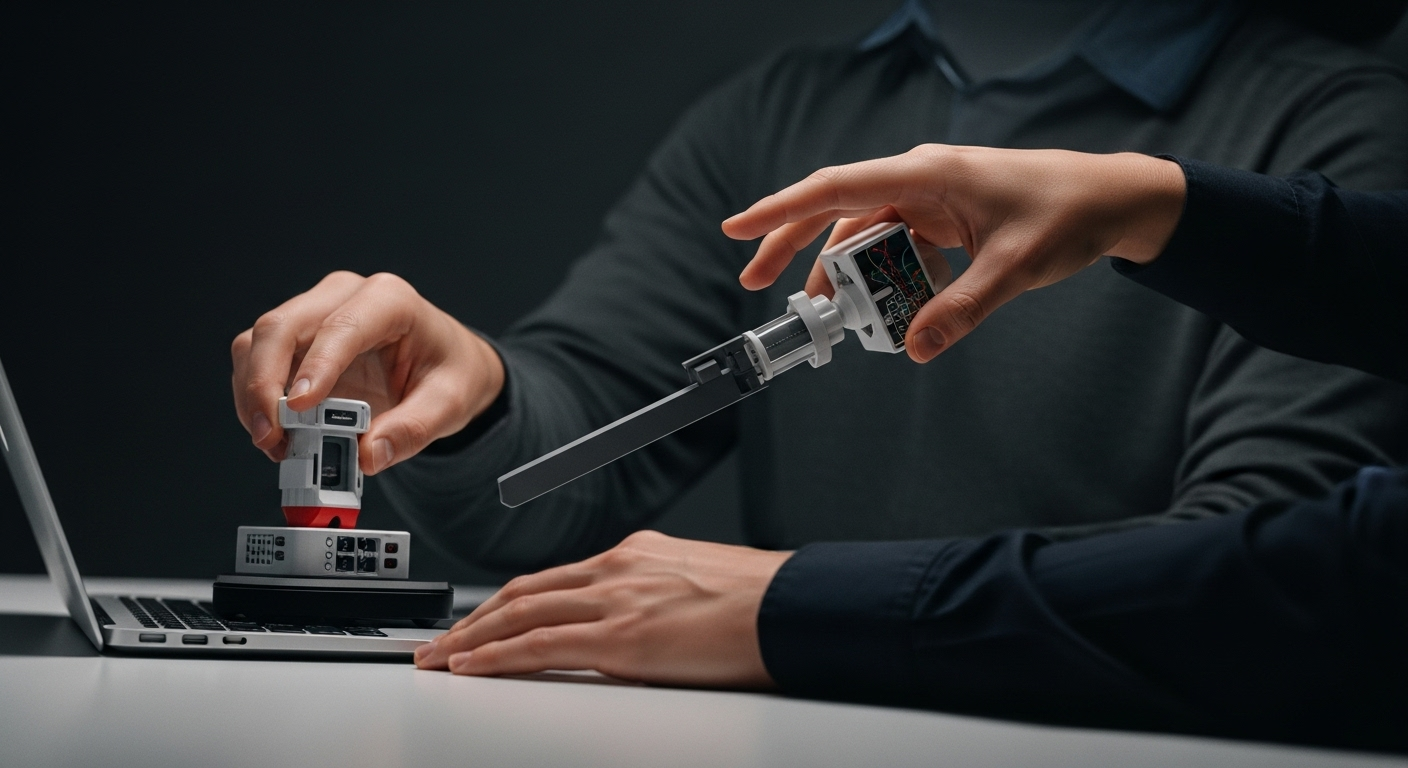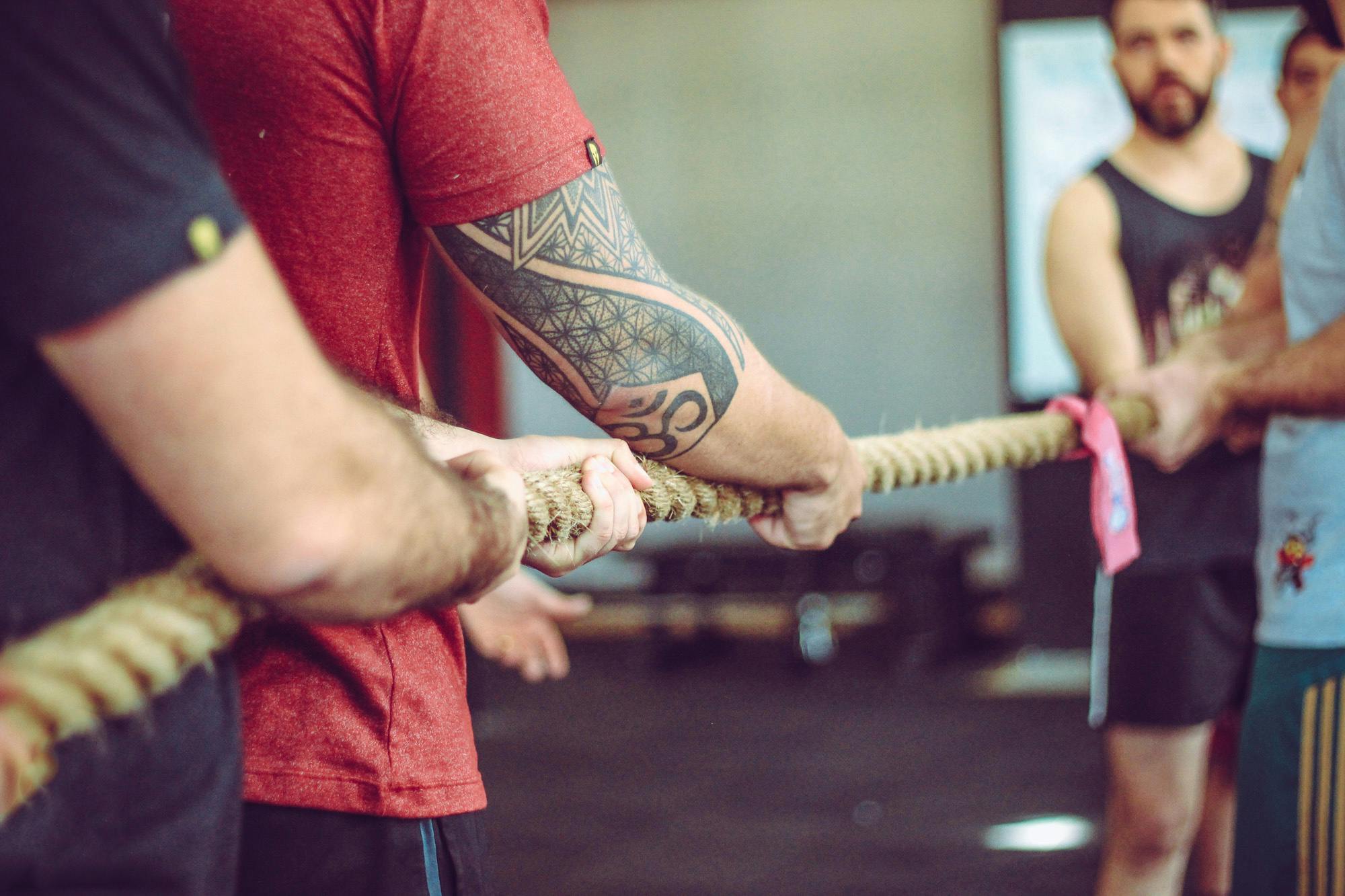Extreme Balancing: The Art and Science of Slacklining
Imagine walking on a thin, flexible line suspended high above the ground, your every movement a delicate dance between balance and gravity. This is the world of slacklining, a sport that challenges both body and mind, pushing the boundaries of human equilibrium. From its humble beginnings to its current status as a competitive discipline, slacklining has evolved into a fascinating blend of athleticism, mindfulness, and physics-defying feats.

As slacklining gained popularity, enthusiasts began pushing the boundaries of what was possible on the line. The 1980s and 1990s saw the emergence of “tricklining,” where practitioners performed acrobatic maneuvers on the slackline. This evolution led to the development of specialized equipment, including wider lines for beginners and thinner, more responsive lines for advanced users.
The sport’s growth accelerated in the early 2000s with the advent of social media and video-sharing platforms. Spectacular footage of highlining – slacklining at extreme heights – captured the public imagination and introduced the sport to a global audience. Today, slacklining has become a recognized discipline with international competitions, professional athletes, and a growing community of practitioners worldwide.
The Physics of Balance: Understanding the Slackline
At its core, slacklining is an intricate interplay between the human body and the forces of physics. The line itself, typically made of nylon or polyester webbing, is dynamic and responsive, creating a constantly shifting surface that challenges the slackliner’s equilibrium.
The key to maintaining balance on a slackline lies in the body’s proprioceptive system – the network of sensors in muscles, tendons, and joints that provide information about body position and movement. As the line sways and bounces, the slackliner must continuously adjust their posture and muscle tension to stay upright.
The physics of slacklining involves several key principles:
-
Tension: The tightness of the line affects its behavior. A looser line allows for more movement and requires greater balance control, while a tighter line provides more stability but less forgiveness.
-
Oscillation: The natural back-and-forth movement of the line creates a rhythmic challenge that the slackliner must anticipate and counteract.
-
Center of gravity: Maintaining balance requires keeping the body’s center of gravity aligned over the line, a task that becomes increasingly complex during dynamic movements and tricks.
-
Momentum: Skilled slackliners use the line’s elasticity to generate momentum, allowing them to perform jumps, flips, and other acrobatic maneuvers.
Understanding these principles is crucial for mastering the sport and pushing the boundaries of what’s possible on the line.
The Mental Game: Slacklining as Moving Meditation
While the physical aspects of slacklining are evident, the mental component is equally crucial. Many practitioners describe the experience as a form of moving meditation, requiring intense focus and presence in the moment.
The act of balancing on a slackline demands complete concentration, forcing the mind to let go of distractions and enter a state of flow. This meditative quality has led to slacklining being embraced not only as a sport but also as a tool for mindfulness and stress reduction.
Research has shown that regular slacklining practice can lead to improvements in cognitive function, particularly in areas related to balance, spatial awareness, and decision-making under pressure. The constant need to make micro-adjustments and respond to the line’s movements enhances neural plasticity, potentially benefiting overall brain health.
Moreover, the mental resilience developed through slacklining often translates to other areas of life. Practitioners report increased confidence, improved ability to focus, and enhanced capacity to handle stressful situations. The process of learning to balance, fall, and get back up serves as a powerful metaphor for overcoming challenges in daily life.
From Parks to Peaks: The Diverse Disciplines of Slacklining
As slacklining has evolved, several distinct disciplines have emerged, each with its own challenges and appeal:
-
Tricklining: This dynamic form of slacklining involves performing acrobatic tricks and stunts on the line. Trickliners combine elements of gymnastics, breakdancing, and trampoline skills to create spectacular routines.
-
Longlining: Practitioners attempt to walk extremely long slacklines, often spanning hundreds of meters. Longlining requires exceptional endurance, focus, and technical skill to manage the increased tension and oscillation of longer lines.
-
Highlining: Perhaps the most visually striking discipline, highlining involves walking slacklines rigged at great heights, often between cliffs or urban structures. While safety equipment is always used, highlining demands extraordinary mental fortitude to overcome the natural fear response.
-
Waterlining: Set up over bodies of water, waterlining adds an extra element of challenge with the moving reflection and the potential for a refreshing fall.
-
Urban slacklining: This discipline brings the sport into city environments, utilizing existing structures and creating temporary setups in parks and public spaces.
Each of these disciplines attracts its own community of enthusiasts, contributing to the rich diversity of the slacklining world.
The Physiological Benefits: Slacklining as a Full-Body Workout
Beyond its mental benefits, slacklining offers a comprehensive physical workout that engages multiple muscle groups and systems within the body. Regular practice can lead to significant improvements in overall fitness and specific athletic capabilities.
Core strength is perhaps the most obvious benefit, as maintaining balance on the line requires constant engagement of the abdominal and lower back muscles. This core activation not only improves stability on the slackline but also contributes to better posture and reduced risk of back pain in daily life.
Lower body strength and flexibility are also enhanced through slacklining. The constant micro-adjustments required to stay on the line work the muscles of the legs and feet in ways that traditional exercises often miss. This can lead to improved balance and proprioception, benefiting performance in other sports and reducing the risk of falls and injuries, especially in older adults.
Upper body and arm strength are developed through the act of maintaining balance and performing tricks. The arms play a crucial role in counterbalancing and stabilizing the body, leading to improved shoulder stability and arm endurance.
Cardiovascular fitness is another often-overlooked benefit of slacklining. While it may not appear as intense as running or cycling, maintaining balance on the line for extended periods can elevate heart rate and improve overall cardiovascular health.
Furthermore, slacklining has been shown to have specific benefits for rehabilitation and injury prevention. Its low-impact nature, combined with the intense proprioceptive demands, makes it an excellent tool for recovering from lower limb injuries and improving overall joint stability.
The Gear: Evolving Technology in Slacklining Equipment
As slacklining has grown from a niche activity to a recognized sport, the equipment has undergone significant evolution. Modern slackliners benefit from a range of specialized gear designed to enhance performance, safety, and versatility.
The slackline itself has seen perhaps the most dramatic improvements. Early lines were often repurposed climbing webbing, but today’s slacklines are purpose-built for the sport. They come in various widths, typically ranging from 1 inch (2.5 cm) for advanced users to 2 inches (5 cm) for beginners. The material has also been refined, with high-tech polyester webbings offering superior bounce and durability compared to traditional nylon.
Tensioning systems have also advanced significantly. While early slackliners relied on simple pulley systems or “primitive” setups using carabiners and rope, modern ratchet systems allow for easy setup and precise tension control. For longer lines and highlines, more complex pulley systems are used to achieve the necessary tension without putting excessive strain on anchor points.
Safety equipment has become increasingly sophisticated, especially in the realm of highlining. Purpose-built harnesses distribute weight more comfortably for long sessions on the line. Leash systems have been refined to minimize the impact of falls while allowing for maximum freedom of movement. Additionally, specialized padding and rigging techniques have been developed to protect the line from damage at anchor points.
Advances in lightweight, high-strength materials have also impacted the sport. Dyneema and other synthetic fibers allow for incredibly strong yet lightweight rigging systems, enabling longer lines and more extreme highlining projects.
The development of slackline-specific footwear represents another area of innovation. While many slackliners prefer to walk barefoot or in minimal shoes, several companies now offer shoes designed specifically for the sport, featuring grippy soles and flexible construction to enhance feel and control on the line.
Competitive Slacklining: From Local Jams to World Championships
As slacklining has grown in popularity, a competitive scene has naturally evolved. What began as informal gatherings of enthusiasts sharing tricks and techniques has developed into a structured competitive landscape with international events and recognized world champions.
The primary competitive disciplines in slacklining are tricklining and longline walking. Tricklining competitions typically involve athletes performing routines of acrobatic maneuvers on the line, judged on factors such as difficulty, creativity, and execution. These events often have a festival-like atmosphere, combining competition with community-building and skill-sharing.
Longline competitions test athletes’ ability to walk extremely long slacklines, often under challenging conditions. These events may involve timed walks, distance challenges, or style competitions where the grace and fluidity of the walk are judged.
The World Slackline Federation (WSF) was established in 2015 to standardize rules, promote the sport, and organize international competitions. The annual World Slackline Masters serves as the premier event in the competitive slacklining calendar, bringing together top athletes from around the globe.
Highline competitions, while less common due to the logistical challenges and safety considerations, do exist. These events typically focus on walking extremely exposed lines in spectacular locations, combining athletic performance with breathtaking visuals.
The competitive aspect of slacklining has driven rapid progression in the sport, with athletes constantly pushing the boundaries of what’s possible on the line. World records for longest walks, highest lines, and most complex tricks are regularly broken, showcasing the sport’s dynamic nature.
Slacklining in Education and Therapy: Beyond Sport and Recreation
The benefits of slacklining extend far beyond its role as a sport or recreational activity. Educators and therapists have begun to recognize its potential as a tool for learning, personal development, and rehabilitation.
In educational settings, slacklining is being incorporated into physical education curricula as a novel way to develop balance, coordination, and body awareness. Its accessibility and scalability make it suitable for students of all ages and abilities. Moreover, the process of learning to slackline teaches valuable lessons in perseverance, risk assessment, and self-confidence.
The therapeutic applications of slacklining are also gaining recognition. Physical therapists are using slacklines as part of rehabilitation programs for a variety of conditions, including:
-
Ankle and knee injuries: The proprioceptive demands of slacklining can help rebuild strength and stability in lower limb joints.
-
Back pain: The core engagement required for balancing can strengthen supportive muscles around the spine.
-
Neurological conditions: Slacklining has shown promise in improving balance and coordination in patients with multiple sclerosis, Parkinson’s disease, and stroke recovery.
-
Mental health: The meditative aspects of slacklining make it a potential tool in treating anxiety and stress-related disorders.
Research into these applications is ongoing, with early results suggesting that slacklining could become a valuable addition to various therapeutic protocols.
Environmental and Social Impact: Slacklining’s Role in Conservation and Community
As slacklining has grown from a niche activity to a global sport, its impact on the environment and local communities has come under scrutiny. The slacklining community has responded by developing ethical guidelines and practices to minimize negative impacts and promote responsible enjoyment of the sport.
One of the primary concerns is the potential damage to trees used as anchor points for slacklines. In response, the slacklining community has developed and widely adopted tree protection techniques, using specialized pads and rigging methods to distribute pressure and prevent bark damage. Many parks and public spaces now have designated slacklining areas with permanent anchors, further reducing impact on vegetation.
The highlining community, in particular, has become increasingly involved in conservation efforts. Many highline projects take place in remote, pristine environments, and practitioners have taken on a role as stewards of these areas. Cleanup initiatives, trail maintenance, and advocacy for responsible outdoor recreation have become common activities within the highlining community.
Slacklining has also shown potential as a tool for community building and social development. In urban areas, slackline parks and meetups have created new spaces for social interaction and physical activity. In developing regions, slacklining programs have been introduced as a low-cost, accessible form of recreation and skill development for youth.
The inclusive nature of slacklining, where practitioners of all levels can share the same space and learn from each other, has fostered a strong sense of community. This communal aspect extends beyond national borders, with international slackline festivals and gatherings promoting cultural exchange and global friendships.
The Future of Slacklining: Innovations and Possibilities
As slacklining continues to evolve, several trends and innovations are shaping the future of the sport:
-
Technology integration: Wearable sensors and augmented reality systems are being developed to provide real-time feedback on balance and technique, potentially revolutionizing training methods.
-
Sustainable materials: Research into eco-friendly and biodegradable materials for slacklines and rigging equipment is ongoing, aiming to reduce the sport’s environmental footprint.
-
Urban integration: As cities become more open to alternative sports, purpose-built slackline parks and permanent rigging points in urban spaces are likely to become more common.
-
Competitive format evolution: New competition formats, possibly incorporating virtual elements or multi-disciplinary challenges, may emerge to showcase the diverse skills of slackliners.
-
Therapeutic applications: Continued research into the rehabilitative and mental health benefits of slacklining could lead to its wider adoption in clinical settings.
-
Extreme projects: As equipment and techniques improve, even more ambitious highlining and longlining projects are likely to push the boundaries of what’s possible.
-
Cross-disciplinary integration: Slacklining techniques and principles may increasingly be incorporated into training regimens for other sports and physical activities.
The future of slacklining appears bright, with growing recognition of its physical, mental, and social benefits. As the sport continues to evolve, it will likely attract an even more diverse range of practitioners, from casual enthusiasts to elite athletes, each finding their own balance on the line.
Conclusion: Finding Balance in an Unbalanced World
Slacklining represents far more than just a physical challenge or recreational pursuit. It embodies a unique blend of athleticism, mindfulness, and community that resonates deeply in our often chaotic and disconnected world. The simple act of finding balance on a thin strip of webbing becomes a powerful metaphor for navigating life’s complexities.
As we’ve explored, the benefits of slacklining extend far beyond the physical realm. It offers a path to improved mental focus, enhanced self-awareness, and a deeper connection with our environment and fellow practitioners. The sport’s evolution from a climbers’ pastime to a global phenomenon reflects our innate human desire for challenge, growth, and connection.
Whether you’re drawn to the meditative aspects of longline walking, the adrenaline rush of highlining, or the creative expression of tricklining, slacklining offers a unique journey of self-discovery and skill development. It reminds us that balance is not a static state but a dynamic process of constant adjustment and adaptation – a lesson as applicable in daily life as it is on the line.
As slacklining continues to grow and evolve, it holds the potential to impact lives, communities, and even our relationship with the natural world in profound ways. From city parks to mountain peaks, the slackline stretches out as an invitation to step out of our comfort zones, challenge our perceived limitations, and find our balance in an ever-changing world.
In an age of digital distractions and sedentary lifestyles, slacklining offers a refreshing return to the fundamentals of movement, focus, and human connection. It stands as a testament to the enduring appeal of simple challenges and the remarkable capacities of the human body and mind when pushed to their limits.
As we look to the future, the principles embodied in slacklining – balance, adaptability, focus, and community – may well prove to be invaluable skills in navigating the challenges of our rapidly changing world. Whether as a sport, a hobby, or a philosophy, slacklining continues to inspire and challenge, one step at a time, on a thin line stretched between two points of possibility.





